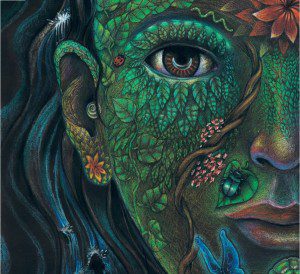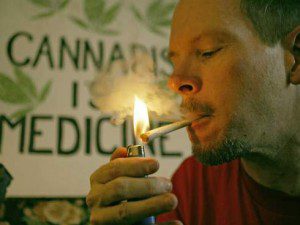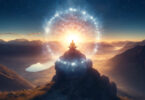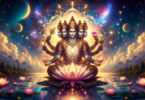Contributing writer For Wake Up World
Reflections on Ayahuasca.
In December of 2013 I visited the Peruvian jungle with two of my best friends. Spending time away from modern civilization, deep in the rainforest, was a healing and beautiful experience on one hand, but also an eye-opening and disturbing one on the other hand. It’s the fourth time I’ve been to Peru. The previous visit was in 2007. The ponerization of society has reached even the most remote corners of the planet, where the virus of “modern progress” has infected the everyday lives of indigenous cultures.
Many people have this romantic view of exotic places like the Amazon and the natives who live there. The issue is not only the pathology of the modern world with its globalization, greed, and capitalism, but that many natives themselves actually seek out that lifestyle in so many ways. It’s a bit ironic — some of us are trying to escape the modern world, and the people living in what we see as “paradise” yearn for what we are trying to get away from… but it’s a clash, and it doesn’t fit.
It’s not a black and white issue, and there is much we can learn from these cultures and their traditions. I’ve certainly learned a lot, and the insights I’ve gained from working with ayahuasca, the “grandmother”, have been revealing and healing in many ways, but we need to get over this romanticizing that surrounds the culture itself. I see this occurring a lot in the yoga community as well, with people drawn to Eastern practices and philosophies which have become very distorted over time, romanticizing India and that whole guru culture. Many people don’t question any of the underlying programs associated with these traditions.
Luckily, we were prepared for our journey, traveling with the right intentions and lots of self-work under our belt already, working with an experienced curandero (shaman) who lives deep in the jungle with his family. We traveled for 8 hours on a banana boat south of Pucallpa on the Rio Ucayali to get to the village. Thanks to my long-time Peruvian friend who came with us — and who is very discerning and careful who to work with, based on his own experiences — this trip was very well planned. However, the fact that ayahuasca has become so popular over the years, with thousands of people traveling to Peru to have “the experience”, has taken a toll on the culture and the people living there. We saw that as well. Ayahuasca tourism has risen exponentially, and along with it, many pseudo shamans who have become greedy for the almighty dollar.
There are even more disturbing things happening there, some of it relating to sorcery and “wars” between curanderos who are greedy and envious of each another. All of this is well-known in the jungle, and ayahuasca has been used in black magic rituals for a long time. Our curandero told us how ayahuasca is being used by some shamans for mind control in order to have power over others by making them ill and psychotic.
During our stay in the jungle we witnessed that he was under a psychic attack from a curandero of a neighboring village (about 20 miles away) who was envious of him because of his success as a shamanic healer, with many people seeking him out. He was able to fight it off with the help of another shaman during one of the ceremonies. It’s like hyperdimensional warfare. Luckily, we weren’t subjected to these attacks, and he held a safe space for us during the sessions.
Ayahuasca is mostly being seen as this beautiful spiritual magic drink that — other than some purging and emotional/physical discomfort — has supposedly only positive effects. This is not entirely true. In the modern world, there have been cases of sexual abuse during ceremonies, and people have died during ceremonies as well. Last year, a British tourist, 19, was found dead on a remote Colombian road after an ayahuasca ceremony gone wrong.
While its “home” is in Peru, here on the west coast of the USA “aya” has become a lucrative “business”. I know of some “shamans” who charge $250 per person, with 50–70 people in a ceremony… (you do the math)… without ever having gone through the long and tedious training and initiation to become an ayahuascero. Ayahuasca is becoming more and more popular — nowadays you can even order it on Amazon (virtual “Amazon”). 12 years ago I remember hardly anyone knew about it, now I get invitations to participate in ceremonies on a regular basis where I live, but something doesn’t feel right about many of these ceremonies, with too many red flags attached to the groups involved.
Unfortunately, there are many people who desperately want to try this brew because of the hype, so their critical thinking goes out the window, along with their intuition. The projections and expectations kick in, and the curanderos are looked at like gurus, being put on a pedestal — with all the transference issues that come along with that. Some shamans take advantage of this naiveté, similar to the Indian Guru pathology and the abuses based on that program… same story, different culture.
Jolane Abrams provides a powerful presentation of the shadow side of ayahuasca tourism:
Jolane Abrams – Think Before You Drink (Ayahuasca)
I’ve managed to free myself from the romanticism blinders which I carried when I first travelled to Peru eight years ago. Much of what Jolane has said I can see in Peru now as well, and it’s not a pretty picture – in fact, it’s gotten worse over the years. However, I don’t want to throw out the baby with the bath water. There is much beauty down there, with amazing healers who live in the jungle or the Andes who possess incredible knowledge.
Our group experienced an amazing time, with healing and insightful ceremonies in a small intimate setting. But it’s not easy work by any means, and certainly not for everyone. It’s also not a magic drink, as Jolane said, and the work never stops — with or without ayahuasca. It’s just another tool, and like any tool it can be used for good or to harm… and most harm happens out of ignorance and wishful thinking.
Dark Shamanism is a topic that is virtually unacknowledged in the neo-shamanism revival movement within Western culture. Many spiritual teachings have been corrupted and watered-down into sellable, easy-to-swallow pop-spirituality these days. Shamanism has also become greatly distorted, omitting many issues most people are not even aware of.
Prof. Neil Whitehead, who was the victim of a Kanaima, or dark shaman attack in Guyana, South America, addresses the dark side of Shamanism in this interview:
The topic of shamanism and “plant medicine” inevitably leads into a discussion of other hallucinogens. My personal experience with psychedelics, in general, is two-fold (I have worked with ayahuasca, san pedro, psilocybin mushrooms, and DMT): on one hand, they have provided incredible insight into myself and reality, and helped me in my personal healing process; but on the other hand, it has also been very confusing and disturbing at times. My introduction to psychedelics happened with psilocybin mushrooms in 1996, which I used for a number of years while on the path of self-exploration and healing.
These experiences have also led me to bodywork, yoga, and Qi Gong, which I’ve been practicing ever since. However, many young kids use these drugs at parties, without any proper preparation or intentions. That’s how I got introduced to them as well, but I stopped taking these substances recreationally after a couple of disturbing experiences, and after that point only worked with them on my own (or with close friends in nature) with the intention of confronting and healing issues within me, not just to “trip out” and enjoy some visual fireworks.
These were also emotional heavy times for me which involved confronting the shadow, with periods of depression, shame, despair, and anger as my shadow was coming to light. Most of this dark side consisted of suppressed emotional states from past experiences, primarily during childhood. However, looking back, I also didn’t have the context and knowledge to integrate these experiences, especially from a psychological perspective. Too much came up for me to handle. I stopped doing any psychedelics for many years, and focused more on integrating what had come up through deeper “sober” self-work, learning about psychology, integrating psychotherapy and using bodywork, yoga, dance, breath-work and Qi Gong to get in touch with my emotional body through these body-mind modalities.
Ayahuasca and other medicine plants can help many people (especially with regards to addiction and trauma) but it is important to combine it with psychotherapeutic work. Dr. Gabor Maté, author of “In the Realm of Hungry Ghosts: Close Encounters with Addiction“, talks about his view of the healing potential of ayahuasca:
At the same time, these substances can open up doors in the psyche, bringing suppressed trauma to consciousness, which can make things even worse, and it can be too much for the individual to handle. It is a potential ‘healing support mechanism’ that can paradoxically be detrimental for some people. That’s why psycho-spiritual therapy should be part of it, in my opinion. Many times, that alone is often enough for creating deep and lasting transformation, without having to take any substance, if one is sincere and sticks to the psycho-spiritual healing process.
Healing trauma, addiction, and childhood wounds, which we all have and are all dealing with to varying degrees, takes its own time, and trying to speed it up with psychedelic substances can sometimes make things worse than better. It’s also a symptom of our fast-food and instant gratification culture, wanting to be fixed as quickly as possible with the least amount of effort and work, and for many people this is what attracts them to psychedelics and ayahuasca.
Often times, using these substances becomes another buffer and avoidance strategy. Looking back at my experiences, I had to acknowledge that I was over-estimating myself and lying to myself about my healing process on some level. Just like many other people, I got hooked on the “peak experience” and avoided deeper psychotherapeutic and sincere self-work without the use of these substances. This also ties into the phenomenon of “spiritual bypassing” as I wrote about in “Spiritual Bypassing, Relationships and the Shadow”.
Marijuana
One of the revealing things the curandero told me after the second ayahuasca ceremony is that I had an energy block/cyst in the area of my solar plexus due to residue of long-time marijuana use. He mentioned that it’s related to something long time ago that is still stuck. In my twenties, I certainly had smoked a lot, and it’s interesting that he saw this blockage, because in the past few years I hardly smoked, even staying off of it completely for over a year, but I also have smoked it here and then again as well. He said he worked on it during one of the ceremonies and helped release it, and I did feel a shift in me.
I had to admit that I was lying to myself about my cannabis use, telling myself that I used it “responsibly” for “medicinal” purposes. For example, I’d smoke a little before doing yoga or getting bodywork, since it helped me to get into my body more, but I also felt that something wasn’t right about it, and that in fact I used it more as a crutch. Also, when I felt depressed or just “off”, I’d smoke to elevate my mood. At times, it helped me to work through what came up; however, truth be told, I had more emotional breakthroughs when I stayed with an emotional discomfort instead of buffering it with the use of marijuana.
What the curandero said certainly didn’t come as a surprise, but was a much needed reminder of what I have been thinking about for a while: how marijuana can be abused, and has negative consequences, especially to the energy body. With all the focus on the positive aspects of this plant and its healing properties, the other side of how it can be abused (and be damaging) is hardly addressed. Most research also relates to the physical benefits, indicating that there are no physical dangers (as opposed to alcohol, for example). Based on that, there is a big focus on legalizing marijuana, with all the “pharmacies” popping up, where you just have to pay a little amount to get a “medical marijuana” card and you can buy and smoke all the pot you want “legally”.
But how many of us really use cannabis only medicinally for serious conditions in a conscious manner? How do we lie to ourselves about it? Are we actually addicted to it? I think the addictive aspect of cannabis is also ignored in many ways, in particular the psychological addiction, and how much harm it does to the energy body. Of course, “energetic effects” are hard to prove through conventional science.
To be clear, I’m all for decriminalization and legalizing marijuana. It’s about personal freedom and choice, but this whole idea of “medicinal use” seems a bit convoluted. Most doctors with a marijuana license basically prescribe cannabis to anyone who wants it. But considering it is supposedly a “prescription” medicine, no one really tells you how much to use, and when to use it. You just get a card, which is basically a free ticket to the candy store. Help yourself; smoke or eat as much you want, whenever you want it. It seems a bit irresponsible to me.
However, I’m also not throwing out the baby with the bath water with this issue. I think the positive aspects of marijuana are well established and proven, and we all can cite many instances where this is the case, in our own lives and the lives of others. The baby is well secure and won’t be thrown out. My intention, however, is to take a critical look at the other side, which seems to be so ignored and denied, relating to how we tend to lie to ourselves about marijuana use.
Observing the appearance and behavior of some of my friends who are daily pot smokers for years (and even decades) have also shown some red flags, especially energetically. Marijuana is more potent than ever before, which actually has made me smoke it less — I simply couldn’t handle the intensity. I remember 15 years ago, I’d smoke a whole joint, get high, and was basically sober again after two hours. Nowadays, you take two puffs from some Frankenstein OG and it stays with you for hours and hours, basically the whole day (even waking up with a pot hangover); to the point of feeling uncomfortable, at least for me, since I’ve become very sensitive to it.
Some people smoke a lot of it since they have built up a tolerance and are more high than sober on a daily basis, not being able to function without it. Extreme pot heads seem to have this energetic bubble that is hard to get through, and many of them seem “emotionally retarded”, meaning that their ability to express emotional intelligence, depth and regulation in a healthy way seems to be missing.
I know of some people who have been diagnosed with PTSD and use pot to cope with their illness, claiming that it helps them to function. While it certainly can aid individuals with that condition under certain circumstances, some of them literally smoke it all day, every day, and it shows up (in their behavior) that it is not helping them, but is in fact numbing them in an unhealthy way, keeping them from healing the Trauma on a foundational level.
Another interesting thing the curandero said was in regards to medicinal plants in general. He’s a botanist, and works with many different plants in the jungle, not only psychoactive ones. Every plant has a positive and negative side, and it’s all about context and application. He mentioned that it is important to truly honor the spirit of each plant and their intelligence, using them responsibly, so you are still the “master”, and you use it instead of the plant becoming the master and it is “using you”.
He said that there is a “reversal” in the modern world regarding marijuana, and that this plant has negative effects on many people, resulting in all kinds of entity attachments and energy blockages. What he had seen in me is what he also saw in many other “gringos” who came to work with him. He said that medicine is not food, and should never be used recreationally, which makes sense and should be common sense, but somehow we have forgotten this, especially with regards to marijuana.
There are many articles about the benefits of marijuana, and it’s important to look at that and bring it to awareness, but I have seen virtually nothing from marijuana proponents who looks at the shadow side of this plant in a more objective manner (and I’m not talking about government-sponsored fear propaganda). This also relates to other medicine plants and psychedelics in general, where there is so much focus on the positive sides and how they have helped people (which is important to point out), but there are cases where these drugs have done great harm.
There seems to be a lot of context-free romanticizing going on about these plants. It’s somewhat understandable, because many of them are illegal in most countries for reasons that are ridiculous, so everyone is focused on the positive aspects to help the decriminalization process. But that can also create a tunnel vision of wishful thinking and distortion regarding some other issues.
Hyperdimensional Attacks and Entity Attachments
The tricky thing is that the harm associated with hyperdimensional attacks and entity attachments is (for the most part) not a physical symptom, but an energetic one. One can damage the energy body with psychedelics, taking on all kinds of spirit attachments that can leach on to anybody who forces open their consciousness to the higher realms. The same goes for smoking pot. It opens up the energy body like an antenna, which can result in ruptures within one’s auric field and acting like a beacon to unhelpful frequencies that can be detrimental in the long run.
Dr. William J. Baldwin wrote about “spirit attachments” in his seminal work “Spirit Releasement Therapy: A Technique Manual“:
“The condition of spirit possession, (that is, full or partial takeover of a living human by a discarnate being) has been recognized or at least theorized in every era and every culture. In 90% of societies worldwide there are records of possession-like phenomena…
Severe stress may cause susceptibility to the influence of an intrusive spirit. Altering the consciousness with alcohol or drugs, especially the hallucinogens, loosens one’s external ego boundaries and opens the subconscious mind to infestation by discarnate beings…
Spirit attachment does not require the permission of the host. This seems to be a violation of free will. It also appears to refute the popular notion that each person is totally responsible for creating his or her reality and that there are no victims. The apparent conflict here stems from the definitions of permission and free will choice. Ignorance and denial of the possibility of spirit interference is no defense against spirit attachment. Belief or lack of belief regarding the existence of intrusive entities has no bearing on the reality of these beings and their behavior.
In denial and ignorance, most people do not refuse permission to these non-physical intruders. Individual sovereign beings have the right to deny any violation or intrusion by another being. With limited, if any, knowledge and distorted perceptions of the nature of the spirit world, the nonphysical reality, many people leave themselves open and create their own vulnerability as part of creating their own reality…
The host is usually unaware of the presence of attached spirits. The thoughts, desires and behaviors of an attached entity are experienced as the person’s own thoughts, desires and behaviors. The thoughts, feelings, habits and desires do not seem foreign if they have been present for a long time, even from childhood. This is a major factor in the widespread denial of the concept and lack of acceptance of the phenomena of discarnate interference and spirit attachment, obsession or possession. The symptoms of spirit attachment can be very subtle. An attached spirit may be present without producing any noticeable symptoms…
A living person can have dozens, even hundreds of attached spirits, as they occupy no physical space. They can attach to the aura or float within the aura outside the body. If any part of the body of the host has a physical weakness the earthbound can attach to that area because of a corresponding weakness or injury to the physical body of the spirit prior to death. A spirit can lodge in any of the chakras of the host, drawn by the particular energy of the chakra or by the physical structures of that level of the body. Many areas of a person’s life can be influenced by one or more attached entities. In short, spirit attachment can interfere with any aspect of the life of the unsuspecting host.”
The curanderos and shamans who work responsibly with these plants know all about this process. They are also aware of the hyperdimensional aspect of reality, with all kinds of non-physical entities and “critters” that just “look” for an opening to attach and feed off of us. There are many dangers – energetically, psychically, and esoterically – when forcing oneself to enter a higher state of consciousness through these drugs.
The trap is that many people look for “peak experiences” without doing the proper grounded work to prepare the body-mind for it (through spiritual practices and sincere self-work). If you take these drugs and have not done the necessary deeper self-work to raise your being/frequency without any substances, it’s like shooting 1000 volts through a cable that can only take 10 volts. You’re going to damage it, and may take on very unhelpful spirit attachments.
Jonathan Zap wrote about the danger of using mind expanding drugs in party settings in his article “Alex Grey and the Mind Parasites“:
“Socially dense environments of strangers and substances mixing together are likely to default to lowest-common-denominator factors of social parasitism/sexual predation/chaotic acting out of fragmented personalities — what I sometimes call a carnival of lost souls. Everything depends on who are the particular people in a group that is having a boundary-dissolving experience or ritual. Naïve people frequently forget this. Such people think the ritual is what matters and take all comers, but this can be a disaster! Generally, I think it unwise to have boundary-dissolving experiences (such as sex and/or hallucinogenic trips) with people you don’t know and wouldn’t trust with your life, because you are trusting your life with them…
I caution people about doing things such as going to a rave with a sketchy vibe redolent of prowling sexual agendas (in other words, almost any rave) and opening themselves to the toxic energy by taking a boundary-dissolving substance. Unless you want to internalize a carnival of lost souls it is probably unwise to blow yourself wide open in an setting of trance-inducing music/lighting and stoned people, many of them on the prowl for parasitic sexual encounters.”
It reminds me what William Chittick, translator of the works of the great Sufi Shaykh, Ibn al-’Arabi, wrote:
“Nowadays most people interested in the spirituality of the East desire the “experience,” though they may call what they are after intimate communion with God. Those familiar with the standards and norms of spiritual experience set down by disciplined paths like Sufism are usually appalled at the way Westerners seize upon any apparition from the domain outside of normal consciousness as a manifestation of the “spiritual.” In fact, there are innumerable realms in the unseen world, some of them far more dangerous than the worst jungles of the visible world. Al-Arabi himself said: So preserve yourselves, my brothers, from the calamities of this place, for distinguishing it is extremely difficult! Souls find it sweet, and then within it they are duped, since they become completely enamored of it.”
Visionary artist Alex Grey also hinted at the “topic of all topics” and hyperdimensional control system based on some experiences he had on LSD:
“At one point I did feel that this entire thing has been orchestrated by these beings, that our coming together was not an accident… When we feel influenced to do certain things, or intuitively guided to do certain things — many times we may seek guidance from a higher realm — In the same way one can be vulnerable to the influence from beings from a lower realm.
I remember one time being on one of the most harrowing LSD adventures I ever had. I felt like I was a flapper in the wheel of fortune and every realm of being and dimension was one of these slots that the little flapper was open to. And in one such dimension that was flying by I saw this really strange insect-like creature lunge out at me. After I came back from this trip, and for days afterward, I was really feeling out of sorts and very energetically drained. And I realized that this thing had jumped out and was probably still embedded in my aura. So I did a whole cleansing to draw all the energy back into the heart and then expand it out from the heart to banish this being.”
As I mentioned before, my intention with this article is not to throw out the baby with the bathwater when it comes to medicine plants, but to address their shadow side which is not much acknowledged these days. There is a “spiritual war” on a nonphysical level, and this war is being fought through us, hence understanding the hyperdimensional aspect of reality is key, not only related to psychedelics and medicine plants. The work required to “wake up” is not an easy path at times. There are many traps, distractions and temptations steering us away from ourselves.
There are tests and lessons everywhere. But as long as we align ourselves with truth, and are sincere in our work — even if we fail, screw up and take a step backwards at times — we are also being supported by the “universe”, which is always guiding us to new opportunities and lessons, connecting us with others from whom we can learn, as they, too, can learn from us as we help each other in making this world a better place. However, as we all know, truth is a tricky thing, and “aligning ourselves with truth” also entails facing the lies we are telling ourselves at times, all along justifying our own blindness.
“There is no coming to consciousness without pain… People will do anything, no matter how absurd, in order to avoid facing their own soul.” ~ Carl G. Jung
This article was excerpted for Wake Up World from Bernhard Guenther’s essay “Reflections on Ayahuasca, Psychedelics, Marijuana and a critical look at the Psychedelic Movement”.
Previous articles by Bernhard:
- Intuition and The Wisdom of The Body
- The Dark Side Of The Internet
- Hyperdimensional Manipulation and Anchoring a Higher Frequency
- Individuality and Limitations of 3D Thinking
About the author:
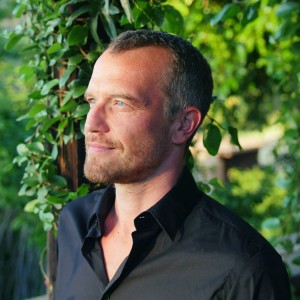 Bernhard Guenther has had a lifelong interest in exploring the mysteries and hidden knowledge surrounding our planet and humanity’s origins, questioning the roots of what constitutes “reality”, and how social (and spiritual) conditioning impacts upon our collective search for the truth in all aspects of life.
Bernhard Guenther has had a lifelong interest in exploring the mysteries and hidden knowledge surrounding our planet and humanity’s origins, questioning the roots of what constitutes “reality”, and how social (and spiritual) conditioning impacts upon our collective search for the truth in all aspects of life.
His blog Piercing the Veil of Reality is a wide-ranging collection of articles, essays and films ranging from spirituality, psychology, politics and history, to the UFO phenomenon and hyperdimensional realities.
Besides reading, researching and writing his material, Bernhard works as a professional bodyworker in Topanga Canyon, California, helping individuals in their path towards healing and holistic wellness.
Connect with Bernhard Guenther at:
Top image © Clancy Cavnar: www.clancycavnar.com

If you've ever found value in our articles, we'd greatly appreciate your support by purchasing Mindful Meditation Techniques for Kids - A Practical Guide for Adults to Empower Kids with the Gift of Inner Peace and Resilience for Life.
In the spirit of mindfulness, we encourage you to choose the paperback version. Delve into its pages away from screen glare and notifications, allowing yourself to fully immerse in the transformative practices within. The physical book enriches the learning process and serves as a tangible commitment to mindfulness, easily shared among family and friends.
Over the past few years, Wake Up World has faced significant online censorship, impacting our financial ability to stay online. Instead of soliciting donations, we're exploring win-win solutions with our readers to remain financially viable. Moving into book publishing, we hope to secure ongoing funds to continue our mission. With over 8,500 articles published in the past 13 years, we are committed to keeping our content free and accessible to everyone, without resorting to a paywall.

